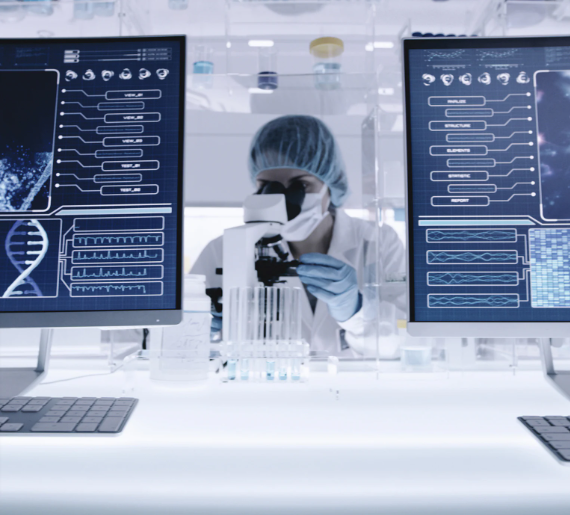Viral vector gene therapies have shown great promises, however, the full extent of their clinical impact and how long they can be retained is not yet ascertained. Although, there have been a series of setbacks and successes for the viral vector gene therapies. On its successes count, there have been rapid development and large-scale rollout of numerous adenovirus vector vaccines that represented an unprecedented achievement that is set to mitigate the worrisome impact of a pandemic. At the same time, there have been a series of challenges that confronted gene therapy assets in the clinical trials which made it to be paused because of safety or failure of meeting efficacy targets.
The success and setbacks that have confronted the viral vector gene therapies are emblematic of its present state. To unlock the full potential of viral-vector gene therapy, multiple technological challenges must be overcome. Lots of technological advances and innovative strategies through the AAV packaging services that will address all aspects of the development of viral vector gene-therapy challenges are being tested. These innovations will result in the next generation of viral-vector gene therapies.
The present state of viral vector gene-therapy
A modified virus is being used by the viral vector gene therapy as a drug delivery vehicle in introducing specific DNA sequences that encode genes, and regulate RNAs or other therapeutic substrates into the cells. Over the traditional modalities, the technology has drawn interest for its potential advantages. Many therapeutic agents such as enzymes, antibodies, and siRNAs can be encoded in DNA sequences that can be rapidly designed and synthesized once there is target identification.
For these sequences, viruses are powerful delivery channels and this is because of their ability to enter cells efficiently and potentially and gain access to hard-to-reach and highly specific cells. In combining these features through custom AAV production, viral vector gene therapies can be used to modify gene expression in a programmable way. This will then offers the flexibility to potentially treat a wide spectrum of diseases including rare monogenic diseases by gene replacement and broad population diseases that control gene expression and help disease prevention by immunization.
There are three vector types; adeno-associated virus vectors, adenovirus vectors, and lentivirus vectors and nearly all the gene therapies available make use of one of the vectors. In gene therapies, AAV and adenovirus vectors are typically used and they are administered directly to the patient using infusion or local administration. AAV is the most popular vector for areas outside of oncology and vaccines. For lentivirus vectors, they are typically used for ex vivo therapies in which cells harvested from a patient are modified in the lab before carrying out a retransplantation.
Viral vector gene therapies are evident in their usage. However, only four of the in vivo viral vector gene therapies are presently on the market and more than 100 gene therapy assets are currently in clinical trials. Also, there are large numbers of in vivo that are also in preclinical development.
Adenoviruses are seen and proven as a vaccine platform. Innovative reimbursement strategies have shown that successful launches are possible with ZOLGENSMA. There has been a forecast of wide sales of viral vector gene therapies which will increase at a higher percentage rate and will positively affect the lives of tens of thousands of patients.
Challenges that will showcase the potential of viral vector gene therapies
The present viral vector gene therapies are the aggregate of decades of biological and clinical research. And three fundamental challenges are limiting the application of viral vectors as more patients have received the therapies. The challenges are getting past the immune system, lowering the dose, and controlling transgene expression. With the ongoing research to tackle these challenges, more technological innovations are being generated and it has the potential of transforming the current therapies and pave way for the potential of viral vectors.
Innovative solutions that address the challenges of viral vector gene therapies
In tackling the three major challenges that gene therapy is faced with, myriad innovative solutions have been suggested. And each of these solutions through the AAV production service focuses on a specific component of a gene therapy product or part of the development process. These innovative process has outlined multiple core challenges, outline multiple paths to realize the promise of viral vector gene therapy.
Improved capsids: Capsids that have been engineered in the lab are been considered and selected to overcome the challenges of viral vector gene therapies. Improved capsid properties could bring diverse immediate benefits.
Improved vectors: engineering the vector of the viral vector gene therapies can be considerably easier, cheaper, and quicker. With adenovirus and lentivirus, vector engineering is often easier than with AAV vectors because of its inability to package large pieces of DNA. Vector engineering has two aims, reducing the immunogenicity of the viral vector and improving transgene expression.
New types of cargo: the cargo delivered by the viral vector gene therapy is a working copy of a gene that is used to replace the patient’s disease-causing copy of the same gene. And this is being leveraged to deliver other types of molecules with therapeutic values.
Other innovative solution approaches are improved manufacturing processes and improved pretreatment and conditioning regimens.
































